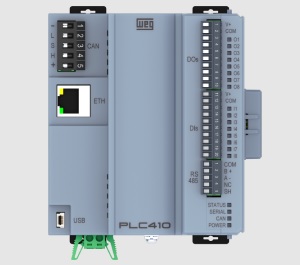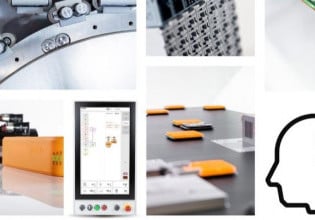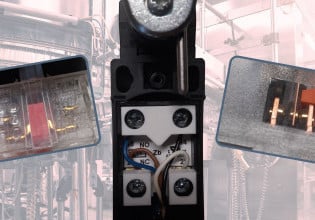Introducing the PLC410, WEG’s New PLC: Smaller But with Powerful Specs
Designed with OEMs in mind, the WEG PLC410 is the smaller counterpart of the PLC500, still offering similar features but with useful improvements in expansion I/O, communication, and performance.
WEG is a supplier of many different automation components, being well-known for motors and drives, but also with an extensive lineup of industrial control system components. WEG currently produces a line of PLCs and RTUs tailored for process automation applications, comparable to a medium-sized modular PLC from any other major manufacturer.
The New PLC410 from WEG
The newest addition to WEG's PLC lineup is the PLC410, a more compact yet still modular control system.
While the PLC410 is smaller than the PLC500, it still has many of the same features. The PLC410 is designed with OEMs in mind, particularly for packaging machines, labelers, and bottling or filling machines. These machines are typically stand-alone machines that do not require external automation and are sold as individual units.

The new PLC410 from WEG. Image used courtesy of WEG
I/O Capabilities
Just like any medium to small-sized PLC, there are often integrated inputs and outputs, the PLC410 is no different. The PLC410 comes with 8 digital inputs and 8 digital outputs, which is a small amount when compared to other PLCs on the market in the same category.
Where the PLC410 shines is with its expanding capability. Up to 8 expansion cards can be connected to one PLC410, each card being only 25 mm thick for DIN rail space conservation. Up to 208 local I/O points are supported by the platform.
As expected, the expansion cards are available in many different functions such as inputs, outputs, analog temperature (thermocouple and RTD), and standard voltage or current analog input and output cards are available.

The PLC410 and many of the communication and expansion I/O options. Image used courtesy of WEG
Communication Specifications
Being able to connect and pass data to or from a PLC has become a requirement with Industry 4.0 being in full swing today.
The 410 has one Ethernet interface, one CANbus interface, and one RS485 interface, all included as standard. Using these interfaces, it can support industrial protocols such as CANopen, Modbus RTU, Modbus TCP, Ethernet/IP, and EtherCAT.
With the demand from Industry 4.0 growing, more PLCs on the market are supporting common IoT protocols as well. The PLC410 supports MQTT, which is a protocol used for transmitting small packets of data over a secure connection to a data broker, connected clients can then read the data at a prescribed regularity.

A listing of the communication options made available with WEG’s new PLC410. Image used courtesy of WEG
Programming
Every PLC manufacturer provides a unique programming IDE, but all of them use the IEC 61131-3 standard, with ladder logic still being the most popular programming language for devices of this sort. The PLC410 and the PLC500 both use the popular CODESYS global platform development IDE.
While most other PLC manufacturers charge a hefty sum for their programming IDE, the CODESYS platform is offered in both a paid and a free version. CODESYS is far from a basic IDE; users can create object-oriented applications as well as simulate and debug code before the physical hardware arrives.
Hardware
Today’s PLCs are built in the same manner as common computers and sometimes even use the same components. The PLC410 makes use of a dual-core IMX7 processor and runs at 400 MHz. The scan time of the PLC410 is around 1.6 ms with 100,000 instructions. It has a real-time clock and 4 GB of memory to support large program development. Both retentive and persistent memory have a capacity of 64 kB, and the entire system runs on 24 VDC power.






